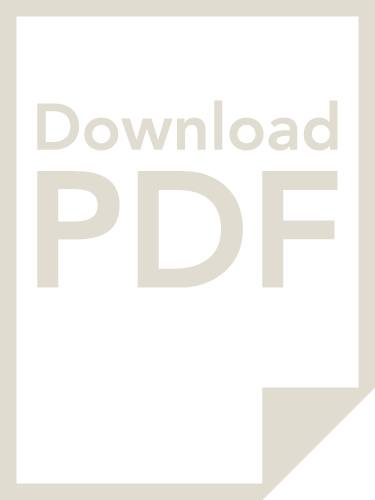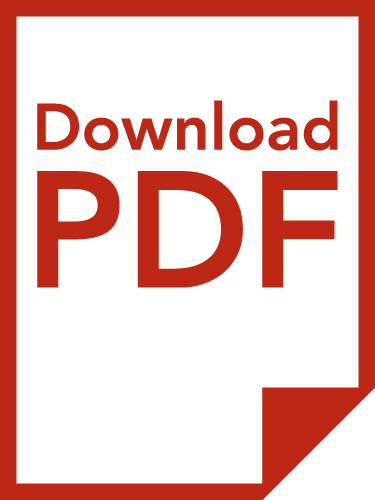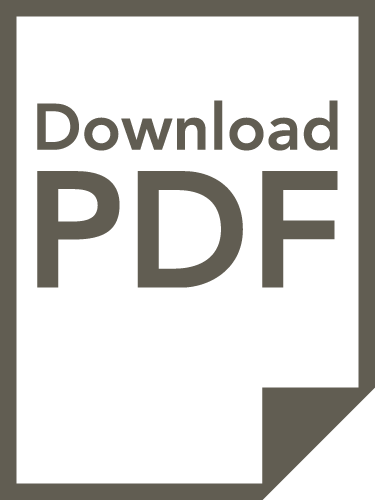
Measuring what Matters
By Jean Gordon & Linda O'Toole
This is the first issue of the Learning for Well-being Magazine. Edited by the Universal Education Foundation, we aim to illustrate and explore the principles and practices underpinning Learning for Well-being (Essentials). The purpose is to enliven and deepen the understanding of L4WB through presenting projects and other initiatives or experiences which illustrate the principles; sharing and discussing related research and insights; critical reflection on policy implications; and contributing to tools for professionals’ development. The intended audience is a broad range of readers, including professionals working in different sectors, interested academics and researchers, international experts and government officials. Each issue will centre on a theme of interest to the L4WB community and authors will be solicited from a range of sectors with differing perspectives represented on each theme, irrespective of whether they are already involved with the L4WB Community.
This first issue takes as its theme 'Measuring What Matters', one of the principles of Learning for Well-being, because ensuring the conditions for feedback is essential for the well-being and sustainability of any system, including the systems that are individual human beings.
Systems and organisations may design their visions and goals in ways that focus on cultivating capacities and environments that support learning across life to lead to happy, healthy and meaningful lives. But if the processes and outcomes (and even the inputs) implemented through the strategic plan are in fact measuring different (implicit) objectives, then these organisations and systems will not receive the essential feedback needed to continue working towards their goals. This is not uncommon. Schools, for example, may develop a project that emphasises the importance of relationships for learning, seeks to foster empathy in the school community and prioritises social-emotional development in their pupils, while national testing focuses exclusively or mainly on cognitive attainment. This clearly creates a lack of alignment and mixed messages. There are many other examples in all sectors. In this first issue we decided to focus primarily (though not totally) on children and young people.
The two fundamental questions we are addressing in this first issue are:
-
How do we know what matters?
-
How do we go about measuring what matters?
1. How do we know what matters?
This refers to the decisions that are made by governments, administrations, researchers, professionals and by individuals and society in general about what we value and, in the case of children growing up, what we consider to be important to support those processes and outcomes. Who participates in making those decisions? Is it purely a matter for governments and officials? Are professionals involved? Are children and families involved? To what extent do governments listen to the results of research? etc. How does this differ for different sectors (education, health, social sector, justice, etc.) and how do they influence one another? How do we as individuals make choices about what matters? Are we influenced solely by our own experiences, by the media, by our peers? Do we have tools and/or competences to determine 'what matters' (for whom, when and why)?
‘After that, it’s all about caring for the individual genius of the child – discovering what it is that that person loves to be doing – whether it’s painting something, turning over the pages of a book or on their hands and knees in a sand pit. It doesn’t matter. It’s focusing on what it is they love and giving them the space and time to explore that.’
Lena Corner (What is an ideal childhood? The Guardian, 17 October 2015)
2. How do we go about measuring what matters?
There is a vast range of methods that are used to formulate, determine and implement indicators collecting data and for major surveys, to assess quality, and to monitor and evaluate policies, provision and practices. They all have strengths; there is no single best approach but they may be based on quite different visions of society and sets of goals. Depending on the methodologies selected, only some of the stakeholders may be involved. Too much focus may be placed on a particular methodology that gives us part of the picture but ignores major areas.
The first five articles look at ‘How do we know what matters?’ in different ways and from different points of view:
In the first article, (1) Valuing individual variation within ‘big data’: What anthropological approaches can contribute, Shanti George draws on her anthropological research across various continents. She weaves her experience of early childhood through school and young adulthood, in the context of families and schools and communities, to ask how we can best elicit from different kinds of people what matters most to them when it comes to the well-being of their children. Her article illustrates the process of bridging 'everyday research' made by ordinary people themselves and more distant academic research. In the next article, Antony Morgan and Aixa Aleman-Diaz, in their article, (2) Measuring what matters for young people’s health and well-being: an asset approach, underline that the more opportunities young people have in childhood and adolescence to experience and accumulate positive skills and emotions, the more likely they are to achieve and sustain physical and mental well-being in later life. The article presents recent work in this field, in particular the World Health organisation's Health Behaviour in School Aged Children research as an example of promoting the measurement and use of positive indicators in assessing the health status of children and young people. Kenneth Gordon, a Clinical Psychologist whose work looks at positive mental health, contributes an article asking (3) Can mental health services help people to flourish? In his article he emphasises that we cannot assume that well-being and mental illness lie at opposite ends of the spectrum because reality is more complex than this. He argues that if what matters is complete mental health, then we may need a two-dimensional approach which combines established, problem-solving psychological interventions with newer strategies to promote positive growth and flourishing. In the next article, Dawn Tankersley and Mihaela Ionescu, who both work with ISSA (International Step by Step Association), write about (4) The ISSA Principles of Quality Pedagogy: Quality Early Childhood Education and Care through democratic processes. ISSA's work on quality starts from the belief in the right of young children to democratically and actively participate in their education and care processes. This results in a quality framework that guides pedagogical staff in ensuring that children’s voices, as well as the voices of their families, are heard, and incorporated into everyday pedagogical practice. They emphasise the importance of practitioners having the opportunity to reflect on and enrich the definition of quality practices, thus taking ownership and bringing the principles to life in their daily work. The final article in this section is by Anba Rathnam who writes about (5) The Journey Towards Wholeness: An Exploration of the Inner Life of Teachers. His article discusses Krishnamurti’s approach to holistic education and the nature of wholeness, as critical for helping each child counterbalance fragmentation with the unfolding of his or her unique potential. Following a presentation of Krishnamurti’s theory of the conditioned mind, the article presents some outcomes of interviews with teachers at the Oak Grove School in the US, founded by Jiddu Krishnamurti in 1974.
The second group of four articles focuses on the crucial question: How do we go about measuring what matters?
In his article, (6) Large-Scale Data Initiatives, Child Policy, and Measuring What Matters?, Dominic Richardson is asking what can be done to make best use of wide-reaching, politically-influential, and valid sources of data on children and their lives, given that these statistical tools will not answer all the questions about measuring what matters. As he points out, figuring out ‘how’ to measure what matters is only the beginning. Identifying why it matters, what drives differences in what matters, and how to facilitate effective change are all critical. In his article entitled, (7) Children participating in measuring what matters – why, when, how?, Ferran Casas argues that traditional adult-centric thinking too often seeks to demonstrate that children are not reliable in reporting on their lives. But some key information about children’s lives can only be obtained by asking children themselves, even though information provided by children is sometimes uncomfortable, unexpected or even contradictory with the beliefs or representations of adults on childhood and adolescence. In his article he presents the Children’s Worlds project, one of the first initiatives collecting data from children 8, 10 and 12 years of age, with representative samples from 15 countries. He concludes on the importance of reaching agreement on what matters for children’s well-being, including subjective well-being as they themselves understand it, in order to give priority to measure what matters. This is followed by an article by Gerison Lansdown and Claire O'Kane, (8) Monitoring and Evaluating Children's Participation, presenting the Toolkit for Monitoring and Evaluating Children's Participation, an innovative set of principles and tools that has been piloted in nine countries (in Africa, India and Latin America) over an 18-month period. The article describes the rationale, conceptual framework and tools, intended for use by practitioners and children working in participatory programmes, as well as by governments, NGOs, civil society and children’s organisations seeking to assess and strengthen children’s participation in their wider society.
‘You can’t give a young person a voice – they already have one. The skill is learning how to hear that voice and offering the space and opportunity for it to grow.’
Lemn Sissay, poet (What is an ideal childhood? The Guardian, 17 October 2015)
Moving from participation to children's rights, Marie Wernham's article is an evaluation of rights respecting schools: (9) Measuring UNICEF’s ‘whole school approaches’ to child rights education. The article is about whole school approaches to children's rights education and as the title states so eloquently:
‘After 16 years as a head teacher I cannot think of anything else that we have introduced that has had such an impact.’
The article discusses monitoring and evaluation approaches used to understand the impacts of rights education on schools in different countries and an evaluation undertaken in 26 industrialised countries measuring different aspects of child rights education within the overall goal which is to bring about a fundamental transformation in the school environment by embedding child rights into the everyday management, functioning and atmosphere of the school, particularly regarding relationships amongst adults, amongst children, and between adults and children.
The final article is by Linda O'Toole and Jean Gordon: (10) Can we measure happy, healthy and meaningful lives? The authors continue the discussion considering the implications of 'starting with the end in mind'. If it is indeed important for people to feel recognised for who they are, feel as if they belong and experience a sense of agency, what approaches to 'measurements' can contribute? The article focuses on a central principle of Learning for Well-being – inner diversity. It presents briefly what Learning for Well-being means by inner diversity and why it is an important factor in learning equity, as well as examples of exercises designed to take more explicit account of inner diversity. These exercises can be used in different contexts where children are living, learning and playing and could also be integrated into classroom practice, as well as future research methods and the development of indicators in the field of children’s well-being.
‘That’s the thing about childhood – you can’t measure it. You can witness the most wonderful things when young people grow up but of course you cannot grade it. When it comes down to it, the building of self-confidence and self-worth is everything. Nothing else will happen if that doesn’t happen.’
Michael Morpurgo, author (What is an ideal childhood? The Guardian, 17 October 2015)
We hope you enjoy reading this first issue of the Learning for Well-being Magazine and will be very pleased to receive your feedback.



